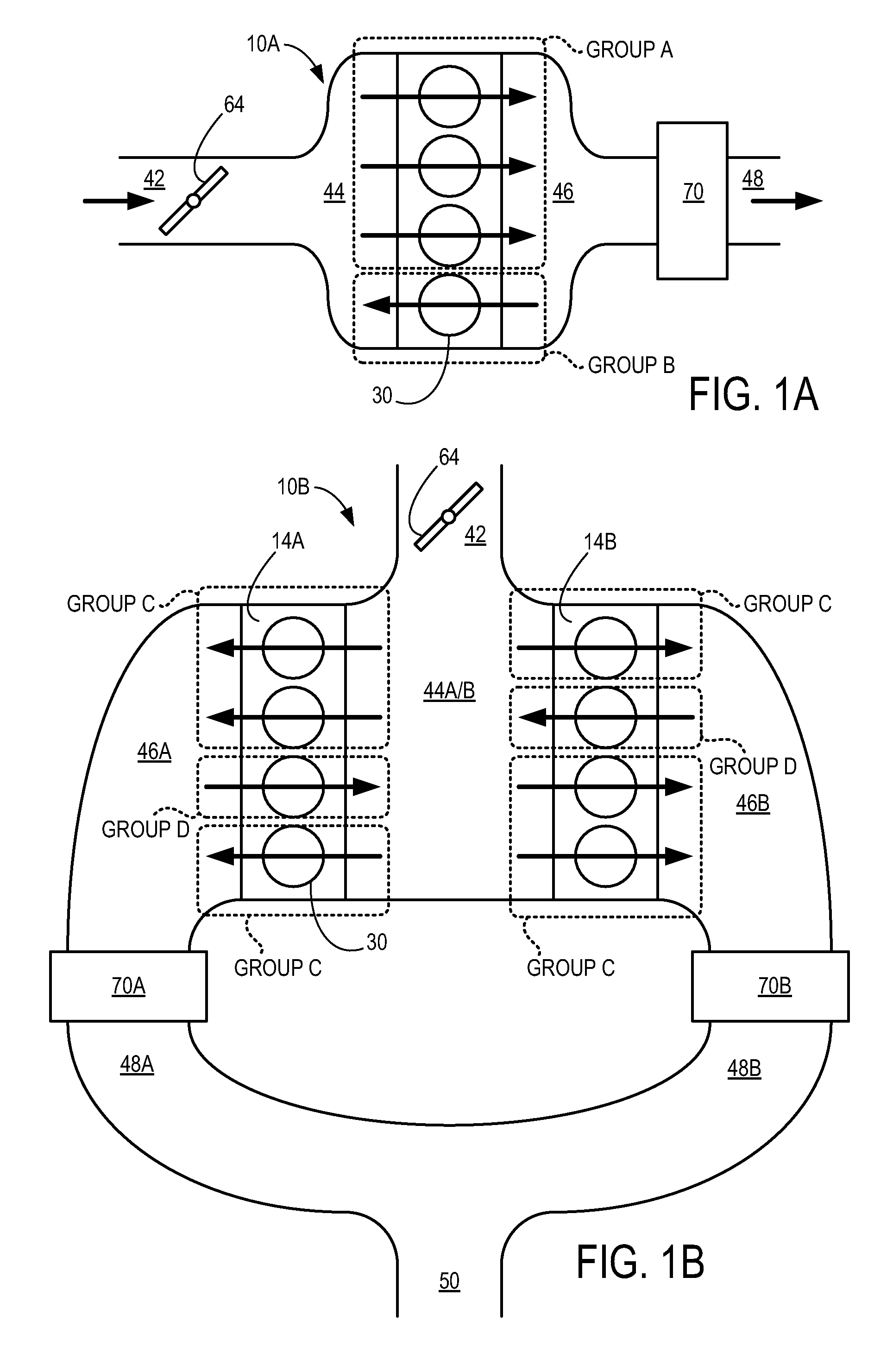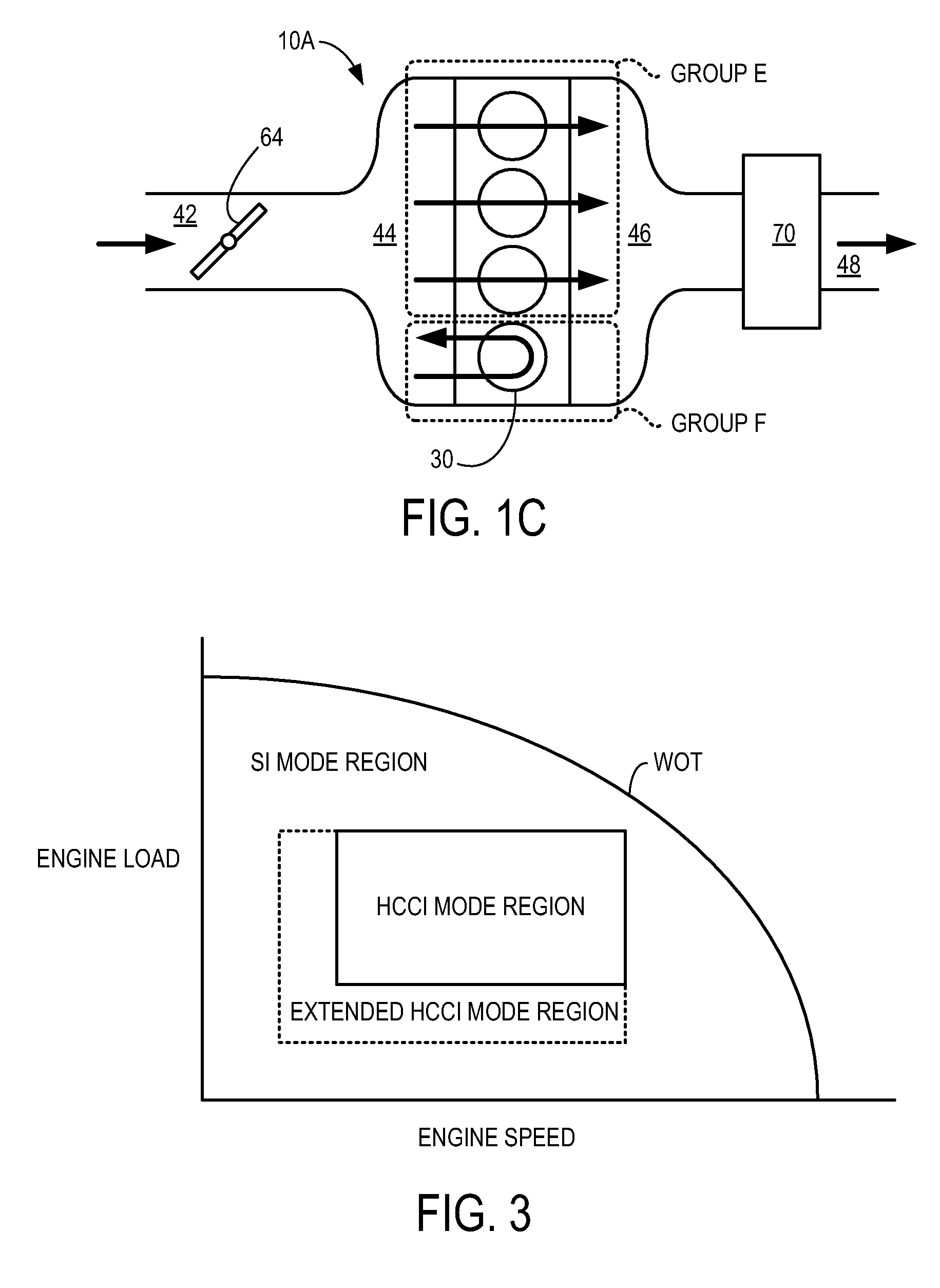Cylinder charge temperature control for an internal combustion engine
a technology of internal combustion engine and charge temperature control, which is applied in the direction of electrical control, process and machine control, etc., can solve the problems of increasing engine knocking or pre-ignition, and difficulty in achieving auto-ignition or controlling the timing of auto-ignition, so as to increase the cost or complexity of the engine system, the operating range of auto-ignition may be extended, and the hcci mode operation may be extended.
- Summary
- Abstract
- Description
- Claims
- Application Information
AI Technical Summary
Benefits of technology
Problems solved by technology
Method used
Image
Examples
example b
[0096 shows a similar approach to Example A, except the torque pulsation is offset by a stroke. Thus, as Example B is applied to a four stroke operation, the torque pulsation is offset 180 crank angle degrees from Example A. Example B shows how during the first stroke, the exhaust manifold valve may be opened and closed as the piston is moving toward BDC to trap gases from the exhaust manifold within the cylinder. During the second stroke, a negative torque may be provided to the crankshaft at 2014 by the cylinder by holding the intake and exhaust manifold valves closed as the piston moves toward TDC due to compression of the gases trapped within the cylinder. Next, during the third stroke, the torque removed from the crankshaft during the second stroke may be recovered at 2016 by the piston as the trapped gases expands within the cylinder by holding the intake and exhaust manifold valves closed. During the fourth stroke, the intake manifold valve may be opened and closed as the pis...
example d
[0098 shows a similar approach to Example C, except the torque pulsation is offset by a stroke. Thus, as Example D is applied to a four stroke operation, the torque pulsation is offset 180 crank angle degrees from Example C, 360 crank angle degrees from Example B, or 540 crank angle degrees from Example A. Example D shows how during the first stroke, the torque may be recovered at 2024 by the cylinder as the compressed gases expand as the piston moves toward BDC. During the second stroke, the intake manifold valve may be opened and closed while the piston moves toward TDC, thereby expelling gases from the cylinder into the intake manifold. During the third stroke, the exhaust manifold valve may be opened and closed while the piston moves toward BDC to trap gases from the exhaust manifold within the cylinder. During the fourth stroke, the trap gases may be compressed as the cylinder moves toward TDC, thereby removing torque from the crankshaft as indicated at 2022. In this way, the c...
example e
[0100 shows an example where a net braking torque may be provided to the crankshaft while also proving a net flow of exhaust gases from the exhaust manifold to the intake manifold. During the first stroke, around TDC of the first stroke, the exhaust intake manifold valve may be opened and closed to rapidly expel gases from the cylinder, thereby releasing the gases compressed by a previous stroke. During the first stroke, torque may be removed from the driveline at 2026 as the piston moves toward BDC against the vacuum formed within the cylinder. Around BDC between the first and the second stroke, the intake manifold valve may be rapidly opened and closed to admit gases from the cylinder, thereby diminishing the vacuum within the cylinder. During the second stroke, torque may be again removed at 2028 from the crankshaft by the piston compressing the gases admitted to the cylinder from the exhaust manifold. Around TDC between the second the third strokes, the intake manifold valve may...
PUM
 Login to View More
Login to View More Abstract
Description
Claims
Application Information
 Login to View More
Login to View More - R&D
- Intellectual Property
- Life Sciences
- Materials
- Tech Scout
- Unparalleled Data Quality
- Higher Quality Content
- 60% Fewer Hallucinations
Browse by: Latest US Patents, China's latest patents, Technical Efficacy Thesaurus, Application Domain, Technology Topic, Popular Technical Reports.
© 2025 PatSnap. All rights reserved.Legal|Privacy policy|Modern Slavery Act Transparency Statement|Sitemap|About US| Contact US: help@patsnap.com



